ISSN ONLINE(2319-8753)PRINT(2347-6710)
ISSN ONLINE(2319-8753)PRINT(2347-6710)
Sourabh G. Harale1, Prof. M. Elango2`
|
| Related article at Pubmed, Scholar Google |
Visit for more related articles at International Journal of Innovative Research in Science, Engineering and Technology
In this paper, the implementation of composite materials in helical coil suspension system is demonstrated. Previously we were using the conventional steel for helical coil. For required stiffness, the design of such springs is very bulky and costly. Then another implementation is done on the combination of conventional steel and E-Glass fiber/Epoxy reinforced composite material. It was successful in decreasing the weight, increasing the stiffness of the system. But there are some limitations like cost, manufacturing of E-Glass fiber, very low stiffness of single composite spring which was not much helpful to increase the overall stiffness of the suspension system. So metal matrix composite material is used instead of fibers with combination of conventional steels. The intension behind the use of MMC is to improve overall stiffness and life of the system.
Keywords |
| Metal matrix composites, spring design, analysis |
I. INTRODUCTION |
| A. SUSPENSION SYSTEM |
| A vehicle chassis is made up of several systems that all work in union to provide a safe and comfortable ride. The chassis includes the frame, brake system, steering system, and suspension system and wheel assemblies. In present, automobile industries trying to improve the fuel efficiency of automobile vehicle. One of the major factors to maximize the fuel efficiency is weight of automobile vehicle. But we can't compromise with the system like, frame, brake system, steering system, wheel assembly for matter of safety. So we can work on the suspension system to achieve lower weight. Suspension system is one of the important segments of an automobile vehicle. It cushions the ride of the frame, engine, transmission and passengers, while keeping the tires in contact with road under all conditions. In this suspension system, spring is most important part. The function of spring in suspension system is to distort when loaded and to recover its original shape when the load is removed. And to absorb and control energy due to shocks or vibrations. Helical coil spring is normally used for the light vehicle suspension system. The performance of the suspension system is fully depends upon the spring stiffness. If someone wants to reduce the weight of suspension system then he has to consider the other factors like performance, design constraints, corrosion resistance, fatigue strength of material, cost etc. |
| Previously the automobile industries were using conventional steel as a helical coil spring in suspension system to improve the performance. Conventional steel is less costly and stronger material than other but the major problem in use of this material is weight. If someone is going to increase the stiffness of the suspension system then he has to improve the design constraints like coil diameter of spring, numbers of coils, length etc. So it affects the weight of suspension system to rise. Indirectly it affects the overall performance. Therefore we have selected composite material which can give average performance with low weight consumption. Also it has other better properties like stiffness, elastic strength, fatigue strength, corrosion resistance etc. For such requirements, composite materials are the best alternative. |
| B. COMPOSITE MATERIALS |
| A composite material is a combination of two or more materials that results in better properties than those of individual component used alone. The main advantage of composite materials is their higher strength and stiffness, combined with low density, when compared with heavy materials, allowing for a weight reduction. Also they possess significantly improved properties including high specific modulus, good wear resistance compared to unreinforced alloys. The relationship of the specific strain energy is U =σ^2/ρE, where 'ρ' is density and 'E' is elastic modulus. It is observed that composite materials have lower density and elastic modulus which results the greater specific energy. Such properties make a very strong candidate in such applications. |
| Due to such advantages of composite material, many researchers have taken interest in this area. Mehdi Bakhshesh and Majid Bakhshesh[5] has tested behavior of helical spring by replacing steel spring with three different composite helical springs including E-glass/Epoxy, Carbon/Epoxy and Kevlar/Epoxy. And the results are compared. Shiva Shankar and Vijayarangan [9] have studied a low cost fabrication of complete mono composite leaf spring and mono composite leaf spring with bonded end joints. T. S. Manjunatha and D. Abdul Budan [10] have experimented on the strength of the helical spring with the use of fiber reinforced composites. Prabhakar Kammer [7] has experimented studies on mechanical properties of e- glass short fibers & fly ash reinforced al 7075 hybrid metal matrix composites. Saurabh Singh [8] has experimented the combination of conventional steel and composite material (E- Glass/Epoxy). All of the above research papers, shows the feasibility of use of composite materials. But these fiber composites are effective in light weight applications only. Aluminium alloy is used in this research because it has high strength, low durability, machinability, availability and cost is attractive compared to other composite materials. However, the scope of these properties can be extended by using Aluminium matrix composite materials. |
| In MMC's we have selected aluminum matrix composite because this is the cheapest material in MMC's which shows better properties which we required for our application. AMC225xe is one of the grades of Aluminum matrix composite. AMC225xe is a high quality aerospace grade Aluminium alloy (AA2124) reinforced with 25% by volume of ultrafine particles of silicon carbide. It is manufactured by a special powder metallurgy route using a proprietary high-energy mixing process which ensures excellent particle distribution and enhances mechanical properties. The key benefits of AMC225xe for structural applications include: Weight saving, increased component stiffness and high fatigue resistance. |
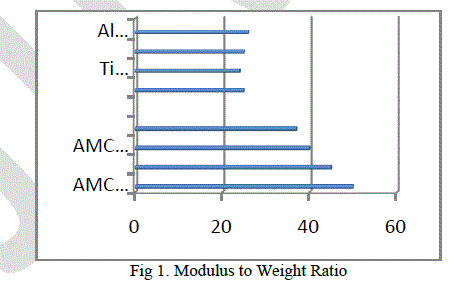 |
| In above example we can see that how AMC's are effective. |
II. RELATED WORK |
| In all industrial and automobile applications, springs those have high potential energy reserving capacity have undeniable role. So many researchers have concentrated on optimization of design and use of different materials to get effective results. Rupa Dasgupta has done the finite element analysis of aluminum alloy based metal matrix composite to find the potential of material for wear resistance application [12]. From this the feasibility of metal matrix material is shown. Some have tried fiber reinforced plastic for helical springs. Three different materials like glass fiber, carbon fiber, glass/carbon fiber in +45 degree orientation are used for helical spring and tested their mechanical behavior [10]. This results a good stiffness and low weight system than conventional material systems. Also Kevlar/Epoxy, E-glass/Epoxy, Carbon/Epoxy have used for selection of best material for helical springs [5]. But the only drawback is the fatigue strength of fiber composites. Also the combination of both fiber composite and conventional material system has tested to overcome fatigue strength problems [8]. This system is much effective for automobile but for light weight applications only. |
III. MATERIAL PARAMETERS |
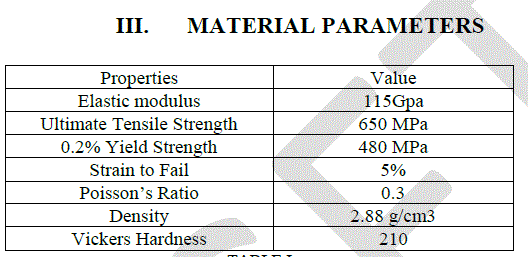 |
IV. DESIGN OF SPRING |
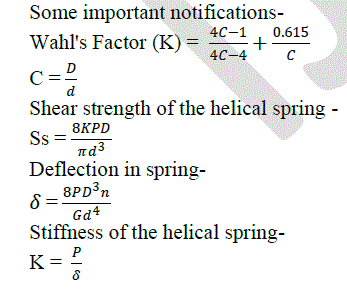 |
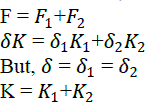 |
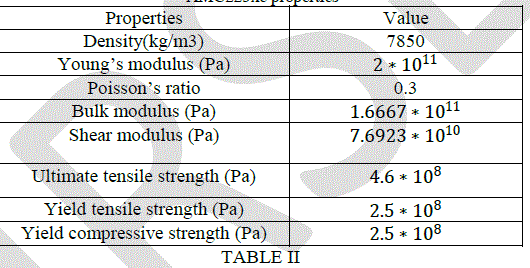 |
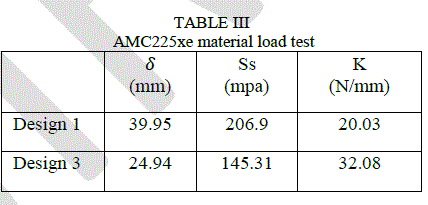 |
| From above result we can see that, if we use MMC's instead of polymer composites in combination with conventional steel, we can successfully increase the performance of the suspension system. Also, the fatigue strength of the system. |
V. ANALYSIS OF DESIGNS |
| These four designs of spring are designed using SOLIDWORKS software. By applying different materials for different designs, the analysis is done by using COMSOL software. |
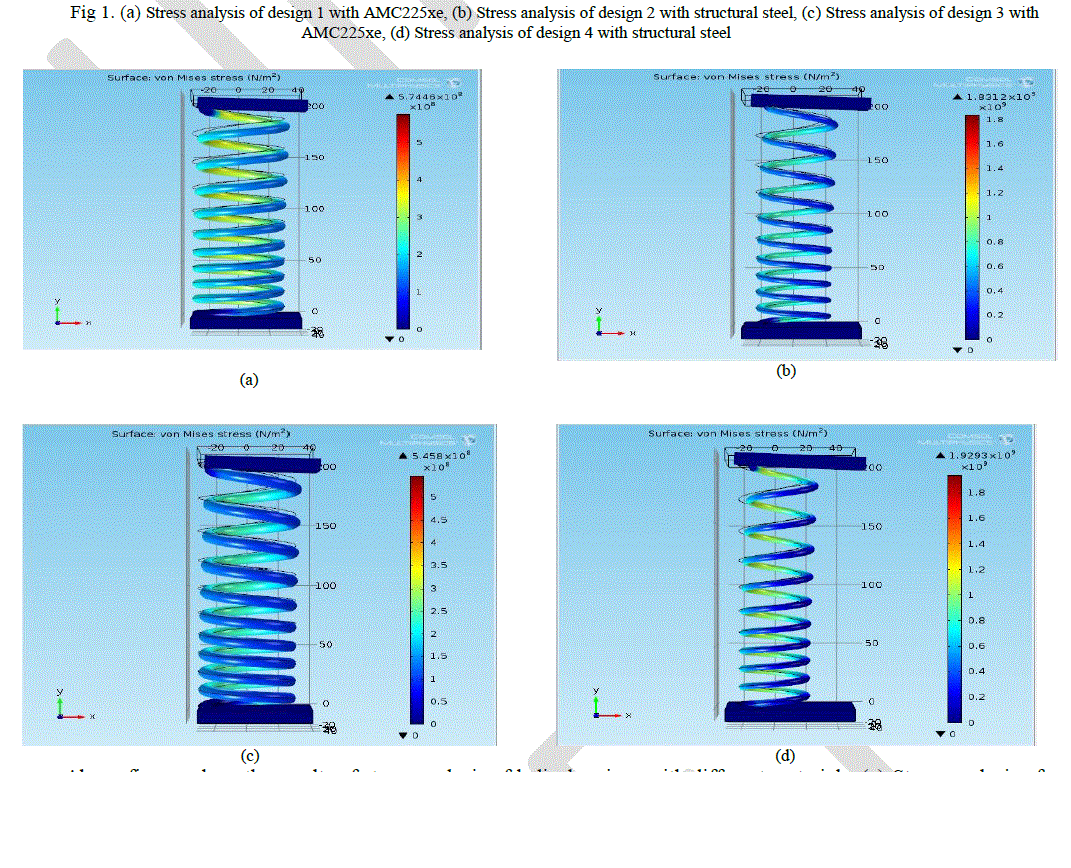 |
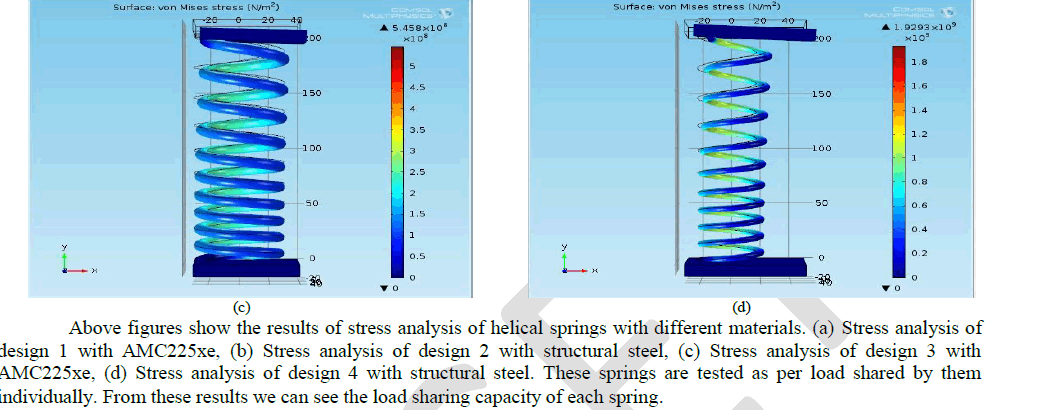 |
VI. CONCLUSION AND DISCUSSION |
| From table 6 it has been observed that the overall stiffness of the suspension system is increased which is the major requirement of suspension system. Also the load carrying capacity of the system is increased. So it can be used for heavy applications also. |
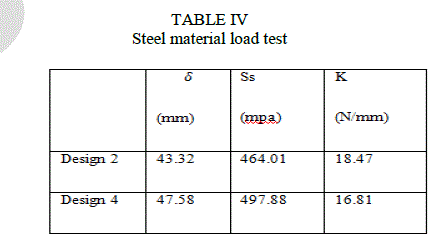 |
| Because of the combinational use of composite material with steel, the overall weight of the system also reduced. In above table, it has been observed that the weight of the system is reduced up to 60% and the volume of the system is reduced up to 75% for same loading conditions. Therefore the light weight system is achieved. So it will help to increase the fuel efficiency of automobiles. Also it can be useful for heavy load applications where the weight is the major criteria. The cost of the overall system is higher than conventional system but because of the other advantages, it can be considerable. For special purpose applications, this system is very much efficient. |
References |
|